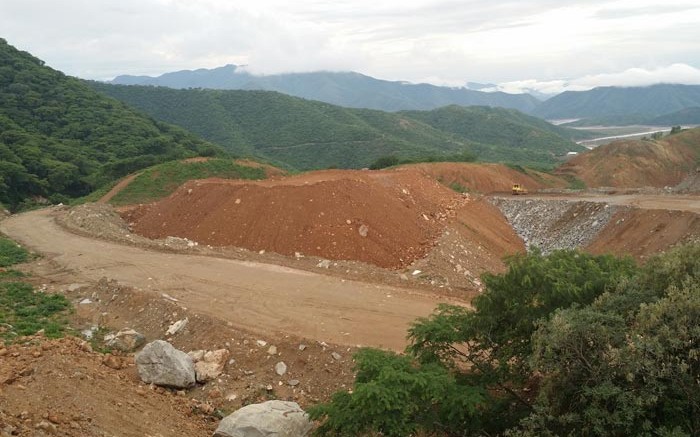When Torex Gold Resources’ (TSX: TXG) El Limon–Guajes open-pit gold mine in Mexico’s Guerrero gold belt ramps up to full production in 2017, the company expects it will be among the largest and lowest-cost gold mines in the world.
El Limon–Guajes is 7 km from Goldcorp’s (TSX: G; NYSE: GG) Los Filos mine — or “a driver or a nine-iron away” as president and CEO Fred Stanford jokingly likes to put it — and is one of two deposits that make up part of Torex Gold’s 290 sq. km Morelos property.
Before joining Torex Gold, Stanford spent much of his 28-year career in the mining industry working in operations management at Inco and later as president of Ontario operations at Vale Inco. He says one of the things he likes most about the El Limon–Guajes project is that it is both high grade and fairly simple.
“It’s just a mine and a mill. All the infrastructure is basically there already,” he says. “You don’t need to build rail or a port — you don’t have to build that kind of stuff. And you’ve got workers and communities that welcome the mine.”
Moreover, at a time when grade is king and newer open-pit mines are typically averaging 1 gram gold per tonne, Stanford says he’s right in thinking El Limon–Guajes “is an excellent asset.”
Situated north of the Balsas River, 180 km southwest of Mexico City, El Limon–Guajes has measured and indicated resources of 53.8 million tonnes averaging 2.79 grams gold per tonne for 4.8 million contained oz. gold. Inferred resources add another 10.7 million tonnes grading 2 grams gold per tonne for 620,000 oz. gold.
The strategy at Torex Gold is to build the first mine; find a second one on the same property, and build that; and find a third one on the same property, and build that as well. Stanford says the company has already found its second mine.
Torex discovered the Media Luna skarn deposit south of the Balsas River in March 2012, and has already defined an inferred resource of 39 million tonnes grading 4.55 grams gold equivalent per tonne for 5.84 million equivalent oz. gold.
Now the company is looking for a third deposit, which it says is possible because geologists have yet to pinpoint the roots of the system that created the first two.
“Those developments are now on the scoreboard,” Stanford says of El Limon–Guajes and Media Luna. “But we want to find the roots, and one expectation is that it’s a porphyry. The skarn at Grasberg led to a porphyry in Indonesia, as did Cadia in Australia. Media Luna is a big skarn … the gold came from somewhere. We know it was structurally controlled by large faults under the earth and we’ve identified where those faults are, and we’re focusing on several different targets.”
Torex Gold plans to spend US$12 million on exploration over the next three years and estimates that 75% of its Morelos property remains unexplored. “The first two deposits we’ve got are on magnetic anomalies and there’s lots more magnetic anomalies that show on our property, so I think there’s lots of potential,” Stanford explains.
In the meantime, the company is “ticking along nicely” at El Limon–Guajes, with construction approaching the halfway mark. In early August the company completed a US$375-million project-finance facility with six banks. At the end of June it had spent US$207 million of the project’s approved budget of US$725 million, and held US$234.9 million in cash.
As a mining jurisdiction Stanford offers nothing but praise.
“One of the advantages of Mexico — other than it being well-endowed with minerals — is that they’ve been mining since before the Aztecs, so they have a mining culture,” he says. “Their regulations are clear and mature and the government is quite effective, and has a development strategy. They appreciate that mines create jobs in the countryside, and that’s a good thing.”


Be the first to comment on "Torex Gold plans large, low-cost mine in Mexico"